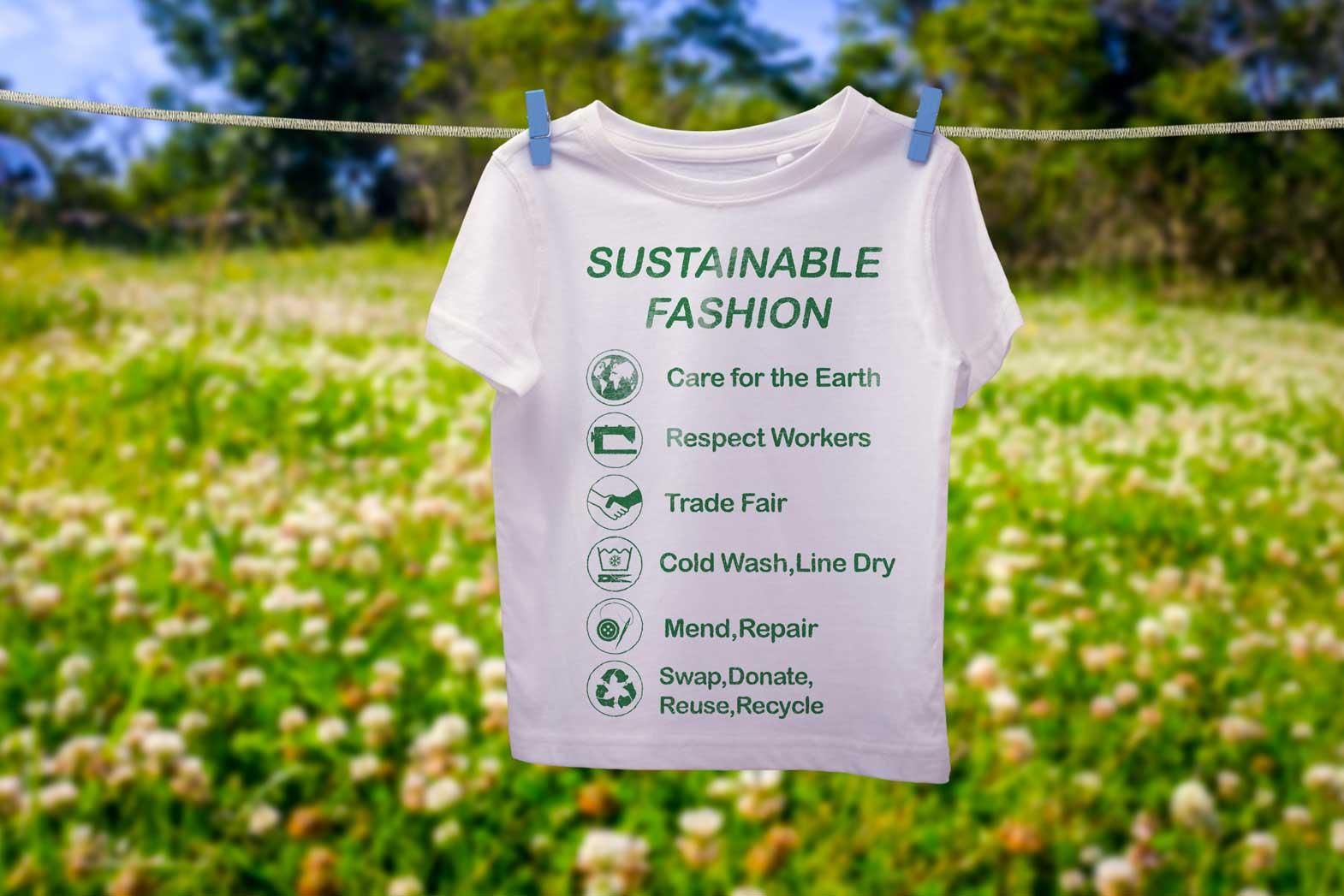Sustainable fashion or eco-fashion is a revolution to enhance the consumer's awareness of social and environmental concerns on the clothing manufacturing sector. Similar movements have already taken place in the food industry, points out A. Siva Sakthi.
Sustainable fashion can best be brought in by creating sustainably designed products which increase the longevity of a garment. There are many reasons behind the formation of the sustainable fashion movement and one major reason is the fast fashion phenomenon. Low-cost clothing flies off the shelves faster, so brands have started focusing on cheap garments with short lead time. Recent studies on carbon footprints in the United Kingdom were triggered by excess clothing bought by customers, increasing the rate of carbon dioxide equivalent emission into the environment, setting off alarms in those rooting for sustainable fashion. People want to buy more garments every season at low cost even though their life span is so short that they need to be discarded at the end of the season. This psychological behaviour of customers has to be changed to implement the sustainable fashion movement.
Sustainability, by definition, should meet current generation needs without compromising future generations. The major challenge in sustainability is the cooperation of all suppliers of individual components. They have to be ethically secured and accounted for, from labour to transportation from factory to retail outlet, aftercare and disposal of garments. The fashion industry has a complex and fragmented supply chain that has global reach.
For the fashion industry, green is the new black to focus on sustainable practices. Several incidents in the twentieth century helped the rise of conscious consumerism. One is the fire in a Nike factory in Indonesia due to poor working conditions, resulting in protests and boycotts by employees and the media. Twenty-four years later, Nike is one of the leading companies in implementing sustainable practices.
Brands have continually supported in raising campaigns like Pantagonia's responsible economy, which shows how sustainability is inbuilt into their corporate structure. Brands like Levi's have cleverly showed such implementation into the lifecycle of their garments to raise consumer awareness. A case in point is Levi's Care Tag For Our Planet initiative and waterless and Wellthread Collections made from 100 per cent recyclable material. Several big brands like Gucci, Calvin Klein, Stella McCartney and Puma are also stressing on sustainability.
Concerns of fashion industry
After the oil industry, the fashion and textile sector is the most polluting, because each stage of a garment's life cycle threatens our planet and resources. To produce a kilogram of cotton -- equivalent to one T-shirt or a pair of jeans -- requires more than 20,000 litres of water, one of the major resources. About 8,000 types of chemicals are used in the conversion of raw material into garments. If some clothes do not sell or when they go out of style, they land in giant landfills, adding to the pollution.
Fast fashion is unsustainable
Fast fashion refers to low-cost clothing designed on high-cost luxury fashion trends. Such garments are disposed of fast. A responsive supply chain works to bring such products to the market in a week's time, opposed to the regular product launch leadtime of six months. Companies in the fast fashion category are thriving on fast cycles such as speedy prototyping, small ratio of more varieties, efficient transportation and fast delivery. Even those companies prefer to attach the hangers with price tags at the factory end itself to save time to get the product launched on the floor as early as possible.
These clothing brands have made their products so affordable that consumers buy mibeore garments, resulting in over-consumption of unsustainable clothing. Brands attract consumers through pleasant prices to ensure consumer loyalty. Consumers, on other hand, without knowing the truth, compare prices of the same or similar products across two to three shops and reach the one which is cheapest. Most of the time, the consumer is unaware that the cheaper garment can be worn only for two to three times as it will lose its personality after washing. The cycle repeats itself thereafter resulting in accumulation of fast fashion and spending money unnecessarily.
Industry's new analysis tool
Analysis of complex process or Life Cycle Analysis (LCA) identifies the impact of each clothing manufacturing process such as raw material sourcing and preparation, manufacture, shipping and transportation, maintenance, disposal and recycling. The relative impact of any given number of garments in a wardrobe can be understood by keeping the length and intensity of utility as a denominator.
A garment of higher environmental impact can be worn longer with less impact than a garment of lower impact worn only once or twice of a short fashion cycle. Brands, along with industry, should pay attention to all factors influencing the impact of the clothing lifecycle such as supply chain, product design and quality. So, LCA is the best tool to identify risk generating areas of environmental impact and to optimise product design based on LCA results and achieve a sustainable business model.
Intergration of sustainable practices
To mitigate future risk, brands should put their best foot in sustainability practices in the design and development phases. Some leading apparel brands are doing well on sustainable practices and lessening environmental impacts but their budget is far beyond the middle market. Nevertheless, they are proving that sustainability can be woven into fashion, from fibre to finished garment. Some ways to do so include:
Design phase: Choose materials such as fabrics, trims, packing items with lowest environmental impact in the design phase itself. Each clothing material should be evaluated for its impact in terms of water usage and energy requirements, with the emission rates in the manufacturing process and renewable and non-renewable resources required for fibre production and cleaning.
Manufacturing: In the manufacturing phase, the industry should manage and control all manufacturing processes from fabric to garment, with special attention to wastewater or effluent treatment and discharges, pollutants and energy use. Another major support in integrating sustainable practices in the manufacturing phase is to adopt supply chain partners who have credible certifications for environmental and social compliances and third party monitoring of certifications.
One of environmental certifications is ISO 14000/14001 which helps to assess the environmental and social compliance throughout manufacturing phase. Similarly, we have quite a few other certifications, like Worldwide Responsible Accredited Production (WRAP) for social/human compliance, GOTS for Global Organic Textile Standard, Oeko-tex and Scientific Certification System (SCS) global recycled content certifications.
Transportation: As labour cost is higher in developed countries, retailers or wholesalers want to make garments in bulk from developing nations where labour cost is less. Hence, transportation becomes a major focus as it is a significant contributor of greenhouse gas (GHG) emissions, environmental impact and cost of apparel. The more garments are produced on home ground, the less their environmental impact. Brands should select best possible transportation routes and they need to try consolidating shipments to single containers, and even the transport mode when sending goods to the port and to the warehouse.
E-tools for sustainability
There are many online tools designed to support brands and manufacturers to evaluate the impact of textiles. One such is called EcoMetrics. It measures Environmental Damage Units or EDUs of textiles. Some others like Made-By, a European non-profit online tool, helps to improve the conditions of the fashion industry towards social and environmental impact. Its main application is Higg Index, which measures environmental performance and social impact of apparel.
Results and discussions
As the customer awareness model explains, it is the responsibility of each fashion brand to promote products with sustainability. Many contemporary consumers have faith in branded clothes and hence the promotion of sustainable garments becomes easier. The garment price factor has to be taken into account as it has bigger impact in promoting these sustainable garments to consumers. Since the entire life cycle of a garment takes more time, the cost of manufacturing each garment will increase. So, there should be government subsidies to those who are in the process of manufacturing and promoting or selling sustainable garments. The near future will witness more sustainable clothing.
Reference:
1. Berners-Lee, Mike. How Bad are Bananas? The Carbon Footprint of Everything (London: Profile, 2010), pp. 93, 112 (table 6.1).
2. en.wikipedia.org
3. www3.nd.edu
4. www.triplepundit.com
5. fastfashion.weebly.com
6. businessoffashion.com
7. greenbiz.com









Comments